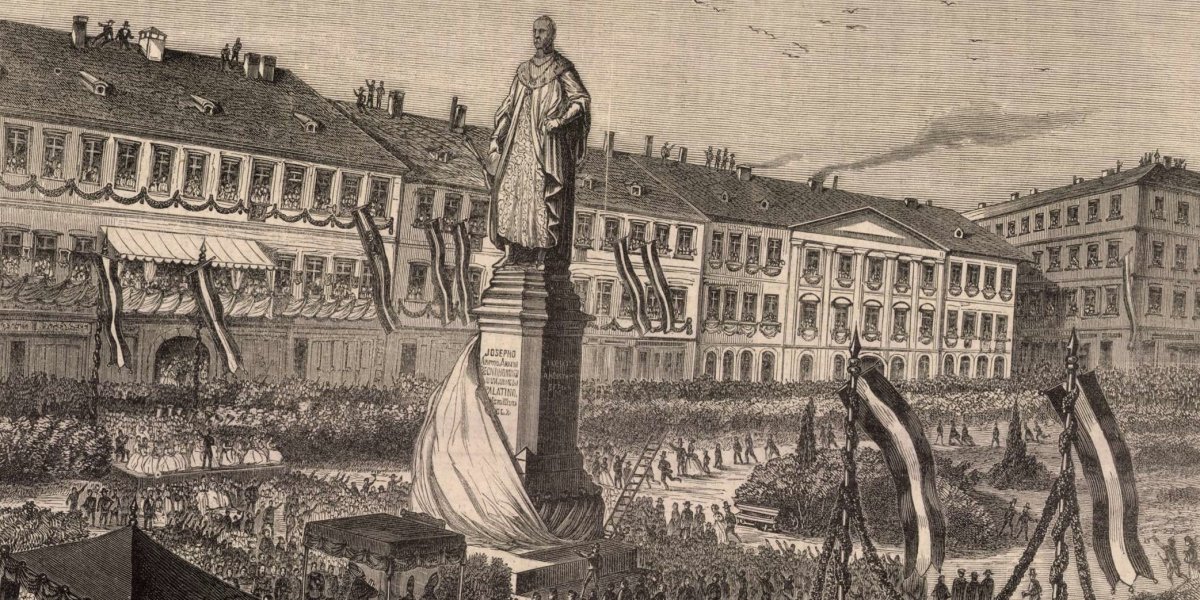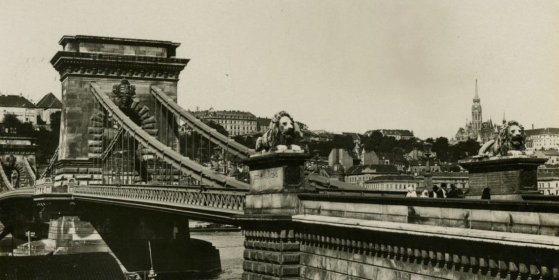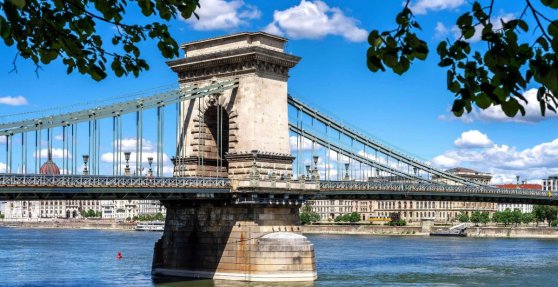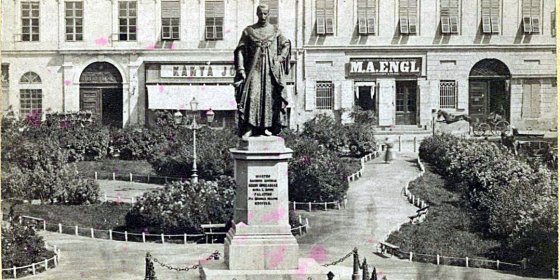 The „intertwined history” of the bridges and the city of Budapest
Which ideas and events have shaped the fate of bridges of Budapest and the cityscape? Alongside many other interesting facts, this question is also answered this newly published book by the Budapest City Archives, which introduces the history of bridges in Budapest.
The „intertwined history” of the bridges and the city of Budapest
Which ideas and events have shaped the fate of bridges of Budapest and the cityscape? Alongside many other interesting facts, this question is also answered this newly published book by the Budapest City Archives, which introduces the history of bridges in Budapest.
Széchényi
 Palatine Joseph, who died 175 years ago, had been systematically developing Budapest for decades before the Public Works Council
Palatine Joseph, who died 175 years ago, had been systematically developing Budapest for decades before the Public Works Council
January 15, 2022 at 3:30 PM
Palatine Joseph [József nádor in Hungarian] died 175 years ago in Buda. Although the archduke born in Florence was destined for a different career, he did much for Hungary, Pest and Buda from 1795 as a governor, then from 1796 as Palatine until his death in 1847. On the anniversary of his death, we put together a bouquet of what Budapest owes to him.
The new Chain Bridge opened 105 years ago
November 27, 2020 at 10:00 AM
The Chain Bridge, as seen today, is not the structure that István Széchenyi dreamed of and which was built to the plans of William Tierney Clark. The Chain Bridge we love and use today is 105 years old and was opened on 27 November 1915.
A bridge without a name – How Chainbridge in Budapest had no name
October 7, 2020 at 11:00 AM
Chain Bridge in Budapest had no official name until 1915 and is still known simply as Chain Bridge in everyday use. However, Lajos Kossuth proposed in 1842 at the laying of its foundation stone that the bridge be named after his great political rival, István Széchenyi, the aristocrat who initiated the construction. Others hoped to name the first permanent crossing between Buda and Pest after princes and princesses. Still, the Ministry of Finance that owned the bridge accepted none of these recommendations. Finally, Széchenyi's name was carved into the structure in 1915, when it was fully rebuilt during the First World War.
The most Hungarian Habsburg moved to Buda 225 years ago
September 17, 2020 at 11:00 AM
Eventually serving as Palatine of Hungary for over 50 years, the young prince being raised in Florence would never have been expected to later be known as the Most Hungarian Habsburg. Palatine Joseph was only 19 when he moved to Budapest with much ceremony 225 years ago. He settled in the country, lived here with his wife and children, died here and was buried in the crypt of the Royal Palace in Buda Castle. His popularity was founded on the attention he paid to the prosperity of Buda and Pest.
More articles
 The „intertwined history” of the bridges and the city of Budapest
Which ideas and events have shaped the fate of bridges of Budapest and the cityscape? Alongside many other interesting facts, this question is also answered this newly published book by the Budapest City Archives, which introduces the history of bridges in Budapest.
The „intertwined history” of the bridges and the city of Budapest
Which ideas and events have shaped the fate of bridges of Budapest and the cityscape? Alongside many other interesting facts, this question is also answered this newly published book by the Budapest City Archives, which introduces the history of bridges in Budapest.
 The Bridge Report, which brought a turning point in the history of Budapest
A travel report that changed the history of Pest and Buda, as well as Hungary. The little book contributed to the change of half a thousand years of legal customs and the implementation of an investment of unprecedented size and technical quality. This book was The Bridge Report [Hídjelentés in Hungarian].
The Bridge Report, which brought a turning point in the history of Budapest
A travel report that changed the history of Pest and Buda, as well as Hungary. The little book contributed to the change of half a thousand years of legal customs and the implementation of an investment of unprecedented size and technical quality. This book was The Bridge Report [Hídjelentés in Hungarian].
 Drama on the university wall - The heroic monument was planned 95 years ago
In the constant hustle and bustle of the Egyetem Square in Pest, the students may not even notice the monument that decorates the short section of wall between the church and the central building of ELTE. However, it commemorates their predecessors, the heroes who fought for their country in World War I, and those who heroically helped them. The first design of the dramatically collapsing soldier was born in 1928, ninety-five years ago.
Drama on the university wall - The heroic monument was planned 95 years ago
In the constant hustle and bustle of the Egyetem Square in Pest, the students may not even notice the monument that decorates the short section of wall between the church and the central building of ELTE. However, it commemorates their predecessors, the heroes who fought for their country in World War I, and those who heroically helped them. The first design of the dramatically collapsing soldier was born in 1928, ninety-five years ago.



